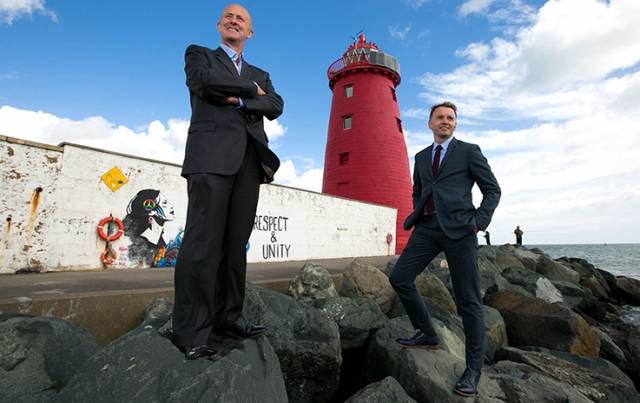Dublin Port today announced the launch of an open call to artists and arts projects to create site-specific works in Dublin Port as part of Port Perspectives, its latest soft values project.
Dublin Port is commissioning a series of original and innovative public artworks and installations, reflecting contemporary art practice. The commissioned artworks will respond specifically to the built environment and local areas in and around Dublin Port, enhancing the public realm to draw audiences and port visitors, while creating a living exhibition and cultural trail. The call for artists will be available at www.businesstoarts.ie/portperspectives.
The inspiration for this project comes from Dublin Port’s increasing interaction with the arts. In recent years a series of commissioned arts projects have provided an effective and powerful means to tell the story of Dublin Port and are helping to renew the historical link between the Port and the City. A central objective of Dublin Port’s soft values strategy is rebuilding these links, which have been traditionally forged through long-standing education, cultural, sporting and community initiatives, and now the arts.
Port Perspectives continues Dublin Port’s legacy and builds upon commissions such as Starboard Home, a partnership with the National Concert Hall that went on to feature at this year’s Electric Picnic, Dublin Ships created by Cliona Harmey with Dublin City Council and the restoration of the Diving Bell on Sir John Rogerson's Quay.
Port Perspectives also includes an exhibition of work by the Belgian artist Eugeen Van Mieghem at Dublin City Gallery The Hugh Lane in 2017 and an arts engagement programme curated by Professor Declan McGonagle.
Open Call for Artists
The commission is open to practitioners in the areas of visual Arts and film including projections. There is an open category for artists and arts projects that are keen to respond to the commissioning brief. Proposals may be made for temporary and permanent artworks and a number of locations within Dublin Port have been selected as locations. These include Poolbeg Lighthouse, the Half Moon Battery, Dublin Port Company’s Headquarters and the North Quay Extension close to the East Link Bridge. Details of all Dublin Port locations are included in the open call documentation.
Business to Arts will project manage the open call. The deadline for applications is October 10th. Artists can find more information and learn about the application process on the Business to Arts website.
The shortlisted artists will be notified in November 2016 and the commissioned artists will be announced in January 2017.
Eamonn O Reilly, Chief Executive of Dublin Port says: “One of the challenges for Dublin Port is to create stronger links between the Port and the City, and through the arts we are working to achieve that. With Port Perspectives we want to bring the port and surrounding areas to life, using new and original artworks that inspire, engage and tell the story of Dublin Port to audiences far and wide. This is a project that celebrates both the visual arts and built environment where we live and work, and one that will greatly enhance the quality of the public realm at the port. I look forward to seeing how artists respond to the brief and working with them on this exciting new initiative.”
Commenting on the announcement Andrew Hetherington, Chief Executive of Business to Arts said: “Enabling artists to create new artworks and using Dublin Port as creative inspiration is at the heart of recent Dublin Port projects like Starboard Home and the Diving Bell. Port Perspectives will see Dublin Port and its partners nurture and develop new surprising and dynamic artworks in this exciting and ever changing part of the city. During 2017 and beyond, the arts will be front and centre for all visitors to Dublin Port and I can’t wait to see what will be imagined and created by the commissioned artists.”































































